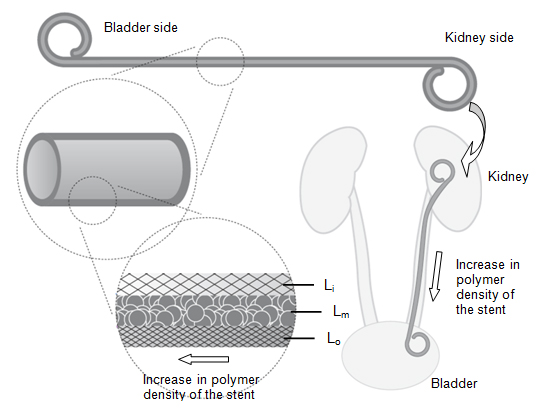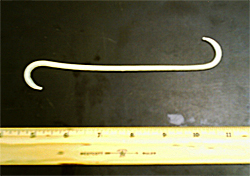Biodegradable Ureteral Stent

Figure 1. Schematic representation of a biodegradable ureteral stent
A ureteral stent is a hollow catheter that is placed in the ureter to allow sufficient urinary flow from the renal pelvis of the kidney into the bladder. It is mainly used
- to bypass ureteral obstruction,
- to provide a mold around which healing can occur,
- to divert the urinary flow away from areas of leakage,
- to maintain the functionality of the ureter following balloon dilation or incision of ureteral strictures,
- and to manipulate or prevent kidney stone migration.
Current ureteral stents, usually made of metals or plastics, have several disadvantages, such as migration of the stent from its intended position, device related urinary tract infections and the development of encrustation on material surfaces, all of which can cause significant morbidity. These factors limit the long-term use of devices within the urinary tract. For this reason current ureteral stents are designed to be surgically removed after they have outlived their usefulness. This is a significant disadvantage as this requires another procedure to be performed on the patient.

Figure 2. Recent prototype ureteral stent
The goal of Akina, Inc.'s ureteral stent research is to design a biodegradable ureteral stent capable of degrading smoothly away in 2-weeks time. Current research on this stent is focused on utilizing a combination of biodegradable polymers and water soluble polymers to generate a biodegradable ureteral stent which is flexible and allows smooth degradation.
Currently, Nathan Blumberg, M.D. serves as a consultant for developing our biodegradable ureteral stents.
 Akinalytics
Akinalytics Polymer Blog
Polymer Blog






